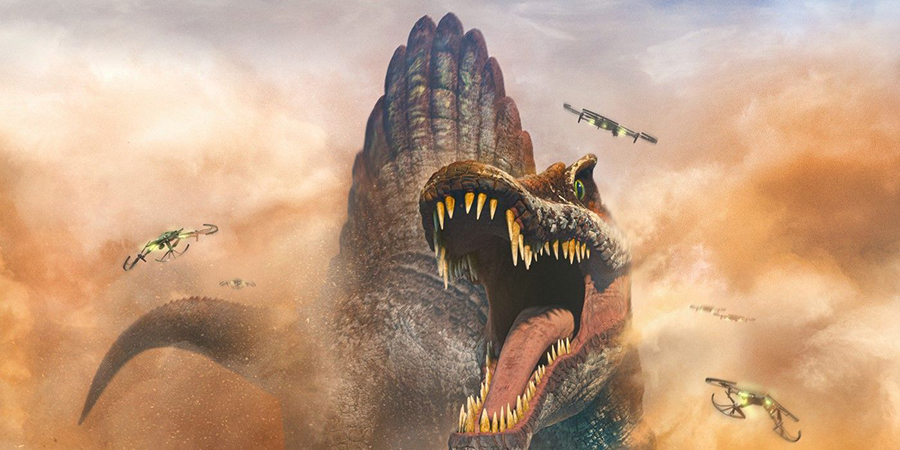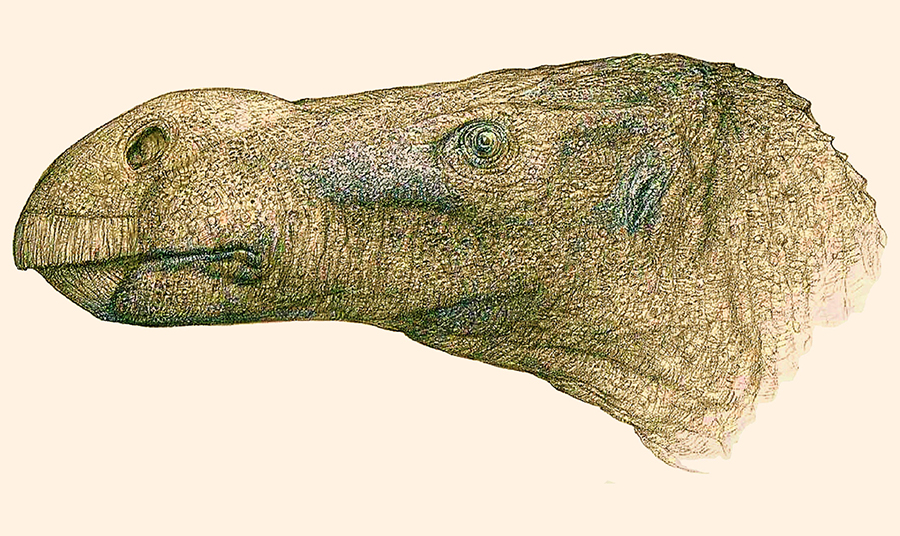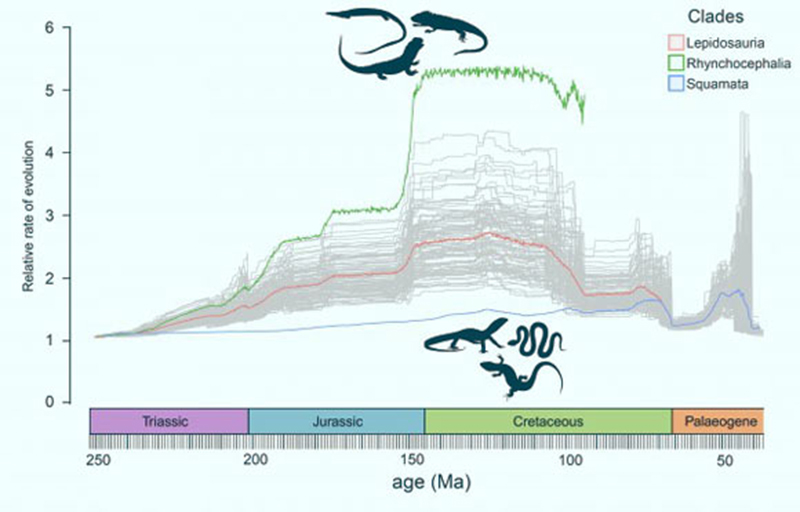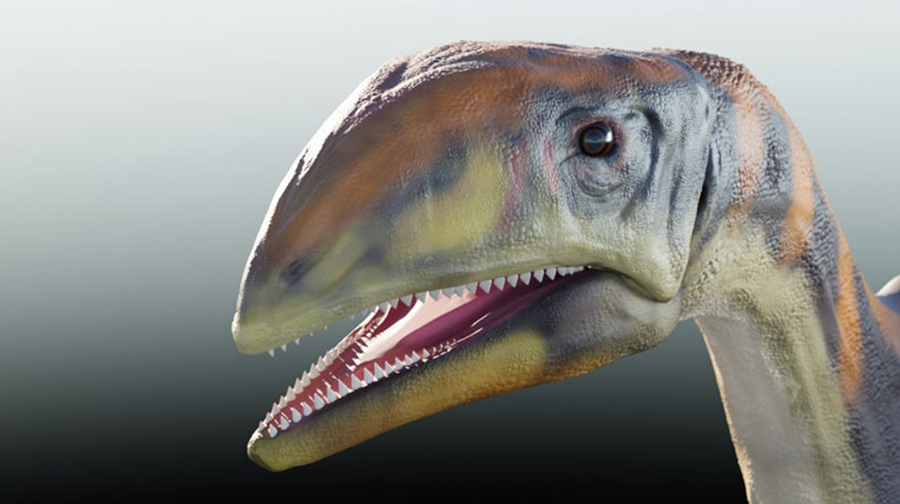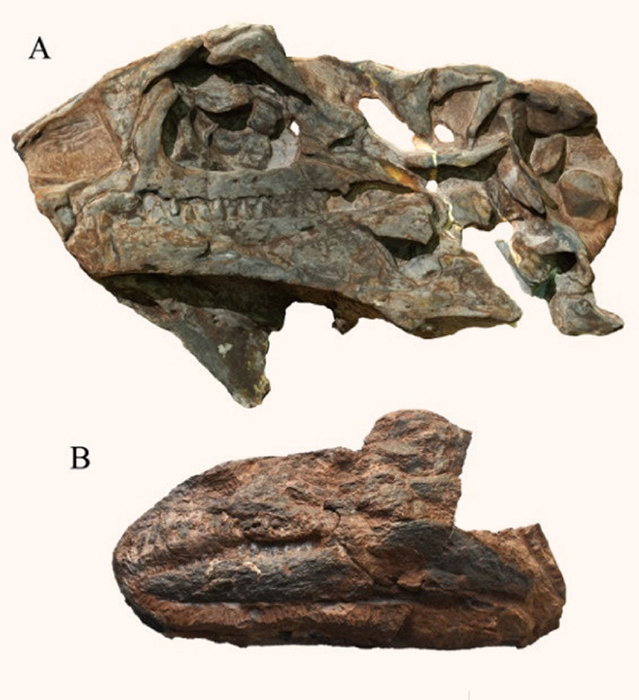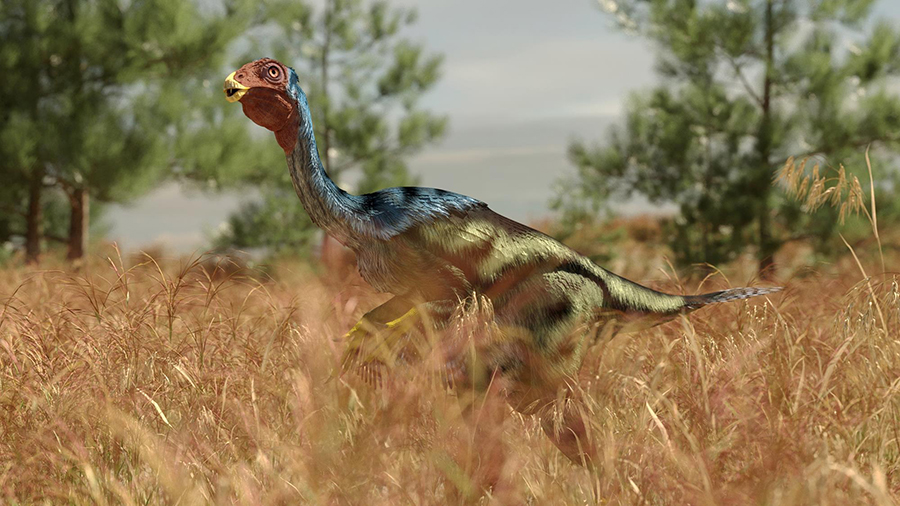
It’s time to get shopping. If you’re looking for a gift for a kid, you might start with the hottest toys, but that can be overwhelming—so your next best bet is to focus on their passions and interests.
If your kiddo is a dino fan, you've arrived at the next best thing to Jurassic Park. While there are only so many plastic stegosauruses one kid can have, worry not. We’ve rounded up 17 of the best dinosaur toys perfect for all those budding paleontologists, from Squeakee the Balloon Dino to a Play-doh-eating T-rex.
1. Tristan Triceratops Squishmallow

Just because your kiddo’s a dino-head doesn’t mean all their dinosaurs have to be sharp-toothed and out for vengeance. Give them something soft to snuggle with this holiday season and pick up a dinosaur Squishmallow. We’re partial to Tristan Triceratops, whose red crest and signature horns are as cute as a button. Note that Squishmallows are selling out fast, though, so don't hesitate to add to cart.
Get the Tristan Triceratops Squishmallow from Amazon for $24.98
2. Dinosaur Pull Back Cars

If your kid’s into both dinosaurs and cars, consider combining those loves by picking up this set of DinoBros roadsters. You get six dino-cars in the set, and their pull-back action is easy enough for even little ones to understand. More than 9,000 Amazon shoppers give them an average 4.7 star rating, raving about their detail, durability, and speed.
Get the DinoBros Pull Back Cars from Amazon for $14.99
3. Squeakee The Balloon Dino

An adorable and modern-looking toy, Squeakee The Balloon Dino resembles a dinosaur created by some balloon-twisting clown at a birthday party. It’s made of plastic, though, and much heartier than an easily-popped balloon. He’s more fun, too: Squeakee is totally interactive and comes to life when children play with him, stomping, chomping and dancing. He makes over 70 sounds including laughing, farting and popping, and can play games like Chicken and Tug Of War. He’ll even engage in some friendly roaring with your child, but if your child roars too loudly, Squeakee will run away. Now that’s a way to encourage inside voices!
Get Squeakee The Balloon Dino from Amazon for $69
4. Interactive Dinosaur Sound Book

For recent entrants into the dinosaur game, snag this set of 12 plastic dinosaurs paired with an interactive, noisy book. Kids reading the book will learn a little about each of the dinosaurs in their pack, and, by pressing the button in the book with the picture of the dinosaur, they’ll hear the rumbling sounds paleontologists think each dinosaur made. Heck, maybe you’ll learn something too!
Get the Prextex Interactive Dinosaur Sound Book from Amazon for $24.99
5. Jumbo Dino Egg

If your kiddo’s a little older and loves to dig in the yard looking for dinosaur bones, direct their energy toward something a little more fruitful by picking up this Jumbo Dino Egg. Part science project, part smash-em-up, this egg holds 12 unique dinosaur models inside, including a T-rex, Dilophosaurus and Ankylosaurus. Kids can use the kit’s chisel, brush and mallet to break the creatures loose and then learn about the dinos with the fact-filled cards included in the set.
Get the Dan & Darci Jumbo Dino Egg from Amazon for $24.99
6. Play-Doh Dino Crew Crunchin’ T-Rex

Get your kid’s hands a little dirty with this dino-riffic Play-Doh set. It comes with fresh dough and a chomping, noisy dinosaur that crunches, gulps and burps while eating your kiddo’s colorful creations. If that weren’t cool enough, the dino also has a see-through stomach, as well as pooping capabilities, complete with sound effects. A pterodactyl buddy is included, and kids can use the molds on both dinosaurs to create accessories for the reptiles.
Get the Play-Doh Dino Crew Crunchin’ T-Rex from Amazon starting at $15.99
7. T-Rex Dinosaur Backpack

Part toy and part accessory, this kid-sized backpack comes with a T-rex in tow, strapped in like a Baby Bjorn. It’s great for kids who might be travelling around the holiday season and need a place to put all their goodies. Nearly 5,000 Amazon shoppers give it a 4.8-star average, with many saying their kids take their backpacks everywhere.
Get the Naturally Kids Dinosaur Backpack from Amazon starting at $24.98
8. Pillow Pet Triceratops

Another soft and squishy bit of dino goodness, this Pillow Pet Triceratops is both a stuffy and a pillow. Snuggly and easy to clean, it's as good for road trips and airplanes as it is for watching a movie at home. It has a high 4.9-star rating thanks to its cozy fabric and giftability.
Get the Pillow Pet Triceratops from Amazon for $26.92
9. Jurassic World Mega Mouth T-Rex

If your kid’s a fan of hyper-realistic dinos, this toy could be for them—even if they haven’t seen "Jurassic World." The Mega Mouth T-rex is intended for kids ages 3 to 8, and stands about 16 inches tall. With a little help, it lunges and chomps on an accompanying human figure, then swallows it down into its dino belly. Just open the door on the dinosaur’s back to retrieve the little guy, and then start the process all over again.
Get the Fisher Price Jurassic World Mega Mouth T-Rex from Amazon for $44.99
10. Lego Duplo Jurassic World Set

Another little kid-friendly spin on "Jurassic World," this Lego Duplo set features a T-rex with an opening mouth, a baby Triceratops and dinosaur trainer Owen Grady with his motorcycle. You’ll also get open-and-close fence pieces, as well as a buildable entrance to Jurassic World. Kids can mix and match this set with their existing Duplo kits to create whatever they want. Let the world-building begin.
Get the Lego Duplo Jurassic World Dinosaur Breakout Set from Amazon for $29.99
11. Dinosaur World Racetrack

Speaking of world-building, this 156-piece set allows dinosaur fanatics to build their own dino-town, complete with road, bridges and two battery-powered, light-up dinosaur cars. Kids can use the 144 track pieces to build a dinosaur racetrack or a dinosaur road, then let the creative play begin. It’s immensely popular on Amazon, with almost 11,000 rave reviews.
Get the Dinosaur World Racetrack from Amazon for $28.99
12. Dinosaur Projector Lamp

Not so much a toy as a piece of entertainment, this dinosaur projector is both a night light and a party starter. With a rotating light and 16 different colors, the rotating lamp shines its dinosaurs onto the walls and ceilings of any darkened room. It runs on batteries or plugs into the wall, and comes with a separate transportation-themed dome, if or when dinos go out of style in your home.
Get the Dinosaur Projector Lamp from Amazon for $22.99
13. Snap-N-Learn Matching Dinosaurs

A tactile toy for little ones, Snap-N-Learn Dinosaurs help build your child’s fine motor skills, shape recognition, matching, color identification and hand-eye coordination. There are nine colored dinosaurs in the 18-piece set, and all of them can be mixed and matched into wacky rainbow combinations. When you’re done playing, the dinos can be stored in their accompanying plastic bucket. Nearly 2,000 Amazon shoppers have given the dinos an average 4.8 stars, saying they’re great for “little hands” and are “super cute.”
Get the Learning Resources Snap-N-Learn Matching Dinosaurs (18-Pc) from Amazon for $19.99
14. Dino Dump: Dinosaur Poop Board Game

A card game perfect for kids with a fondness for toilet humor, Dino Dump is great for ages 6 and up. Players try and get rid of all their cards first, but watch out: You can use cards to throw meteorites, hide under leaves and even scoop up poop in an attempt to beat out the competition. The loser is the player who gets stuck with the scratch-and-sniff poop sticker at the end of the game, which really adds insult to injury.
Get the Dino Dump: Dinosaur Poop Board Game from Amazon for $14.99
15. Dino Ranch Plush

If your little one has fallen in love with Disney Junior’s "Dino Ranch," there are plenty of cute, licensed toys available that are inspired by the show. Amazon shoppers are most fond of this plush version of main character Blitz. According to the brand, it's perfect for all “rancheroos” looking for a “pre-westoric adventure.” Yee-haw!
Get the Dino Ranch Plush from Amazon for $12.99
16. Step 2 Dino Dig Sand And Water Table

Every kid needs a good water table. They’re perfect for outdoor play, and can even be cleaned out and modified for indoor use if the weather gets a little nippy where you live. Step 2’s Dino Dig water table has separate areas for sand and water and can accommodate multiple kids playing at the same time. It comes with a shovel and rake, as well as two cups and four dinosaurs. Kids can pour water into the top of the table’s volcano and watch as it runs down the side of the mountain.
Get the Step 2 Dino Dig Sand And Water Table from Amazon for $79.99
17. Toy Story Rex Plush

One last stuffed animal dino for the road, this little guy is a favorite of any kid who loves "Toy Story." Amusingly anxious on-screen, this plush Rex is soft-hearted and soft-sided, with embroidered features and scaled texturing. One fan dubs him "very huggable."
Get the Toy Story Rex Stuffed Animal from Amazon for $22.99
Prices were accurate at the time this article was published but may change over time.
Purchases you make through our links may earn us a commission.
Source: www.usatoday.com/


